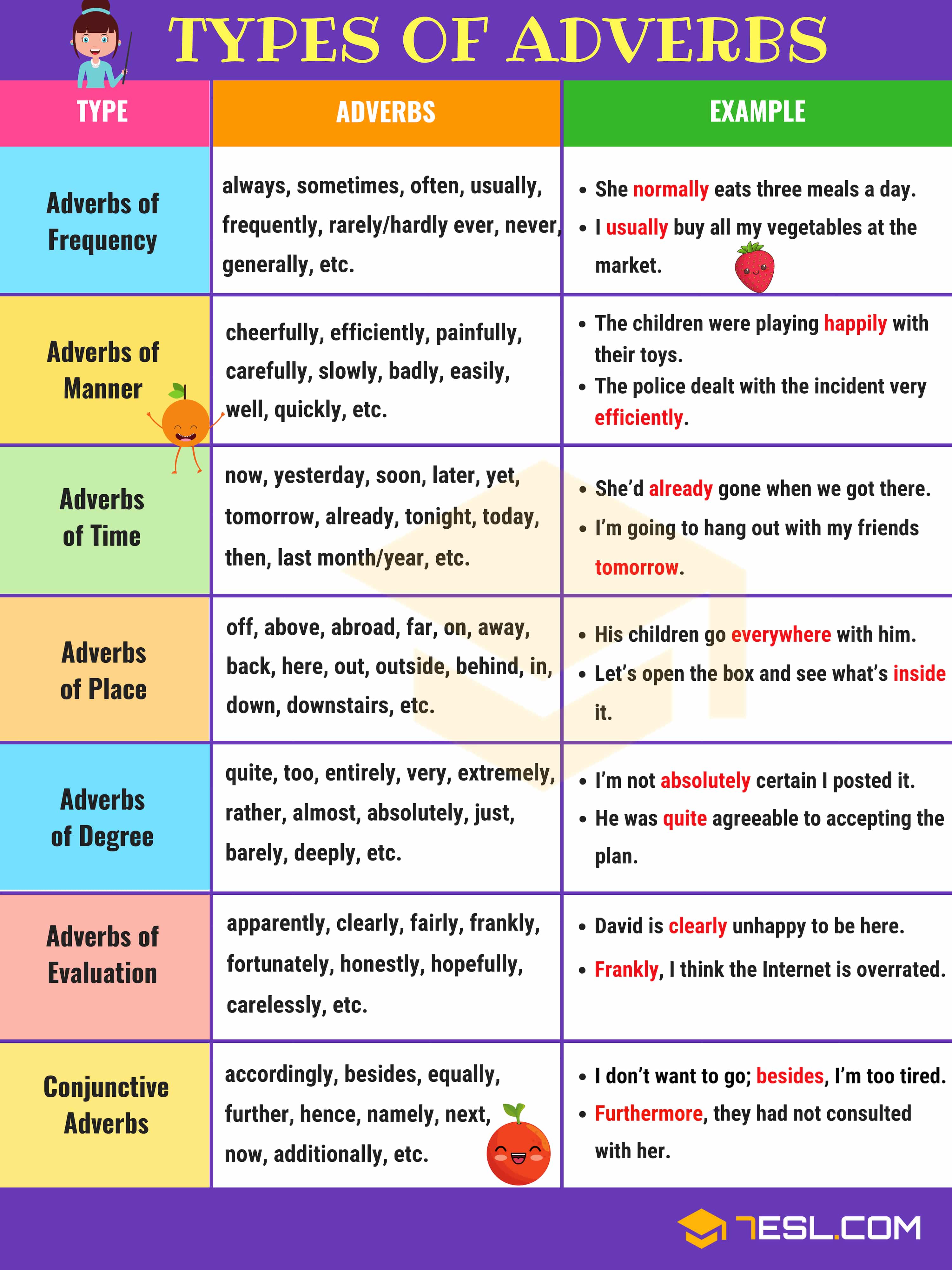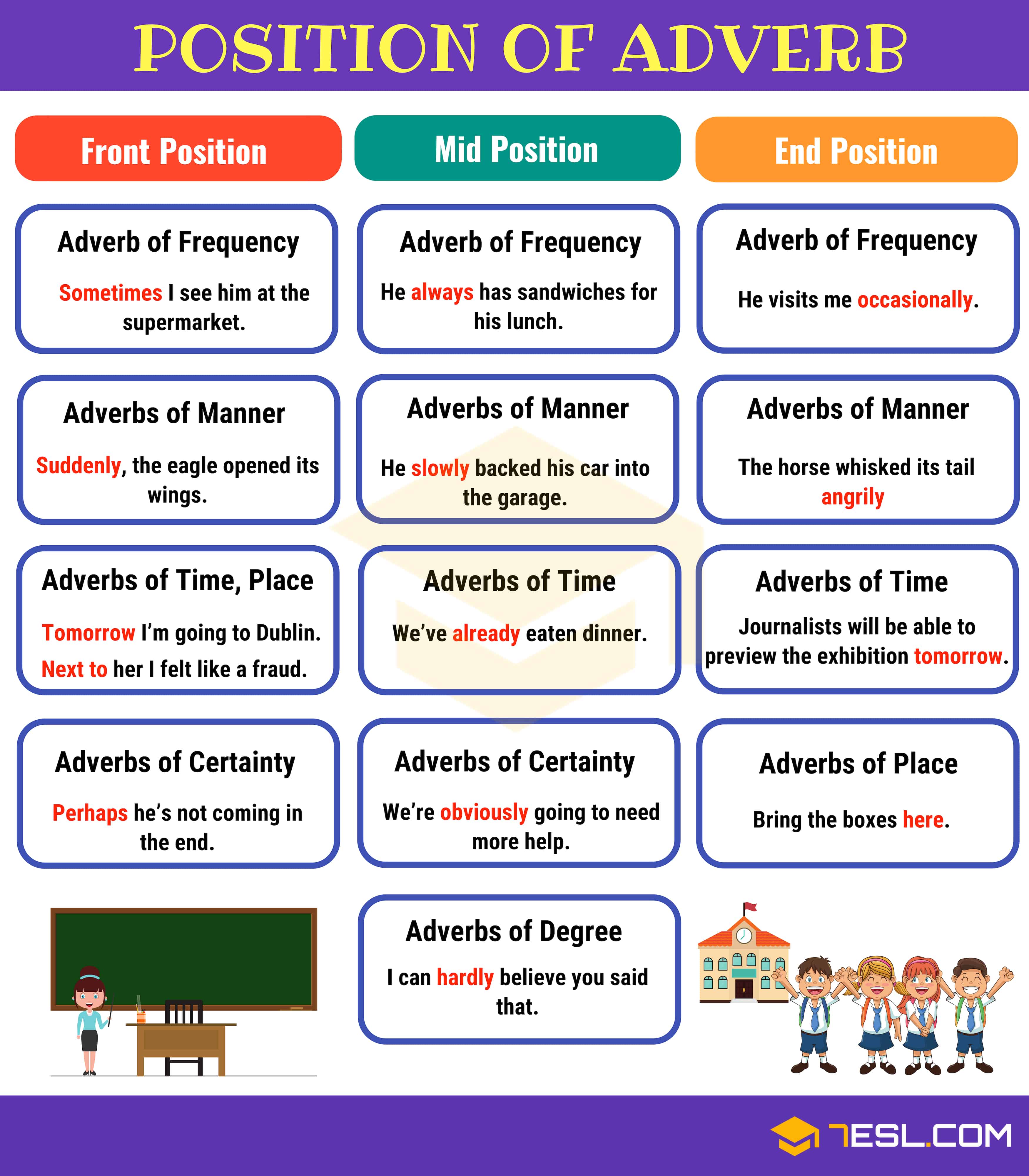What Is An Adverb? Adverb Definition
What is an adverb? An adverb is a part of speech used to describe a verb, an adjective or another adverb. It tells us how, where, when, how much and with what frequency.
Adverb Definition and Examples

Adverb Types & List
There are different types of adverbs expressing different meanings. Generally, adverbs tell us how, where, when, how much and with what frequency. Therefore, types of adverbs are classified according to their functions.
List of Adverbs in English with different types and examples.
-
Adverb of Frequency: always, sometimes, often/frequently, normally/generally, usually, occasionally, seldom, rarely/hardly ever, never, etc.
-
Adverb of Manner: cheerfully, efficiently, painfully, secretly, quietly, peacefully, carefully, slowly, badly, closely, easily, well, fast, quickly, etc.
-
Adverb of Time: now, yesterday,soon, later, tomorrow, yet, already, tonight, today, then, last month/year, etc.
-
Adverb of Place: off, above, abroad, far, on, away, back, here, out, outside, backwards, behind, in, below, down, indoors, downstairs, etc.
-
Adverb of Degree: quite, fairly, too, enormously, entirely, very, extremely, rather, almost, absolutely, just, barely, completely, enough, etc.
-
Adverb of Certainty: apparently, clearly, definitely, doubtfully, doubtlessly, obviously, presumably, probably, undoubtedly, etc.
-
Adverbs of Attitude: frankly, fortunately, honestly, hopefully, interestingly, luckily, sadly, seriously, surprisingly, unbelievably, etc.
-
Adverbs of Judgement: bravely, carelessly, fairly, foolishly, generously, kindly, rightly, spitefully, stupidly, unfairly, wisely, wrongly, etc.
-
Conjunctive Adverb (Linking adverb): besides, comparatively, conversely, equally, further, hence, in comparison, incidentally, namely, next, now, rather, undoubtedly, additionally, anyway, certainly, elsewhere, finally, in addition, in contrast, indeed, moreover, nonetheless, similarly, subsequently, thereafter, yet, also, meanwhile, consequently, nevertheless, etc.

Where Is the Correct Place to Place Adverb in Sentence?
Different types of adverbs and adverbials go in different positions in the clause.
Let’s learn these adverb positions in a sentence, also called adverb placement.
-
The front position: before the subject of the sentence. It gives information in advance, to set the scene for the action that follows.
-
The mid position: the adverb in this position is intimately connected with the verb, generally placed immediately before it. If there is an auxiliary verb, the adverb is placed between the auxiliary and main verb. In case there are two, it is placed between them. If there is a negative auxiliary, the adverb normally goes after the negative element, but we can emphasize negation by placing the adverb just before it.
-
The end position: at the end of the sentence.

English Adverbs Video
What Is An Adverb? Useful Rules & Examples